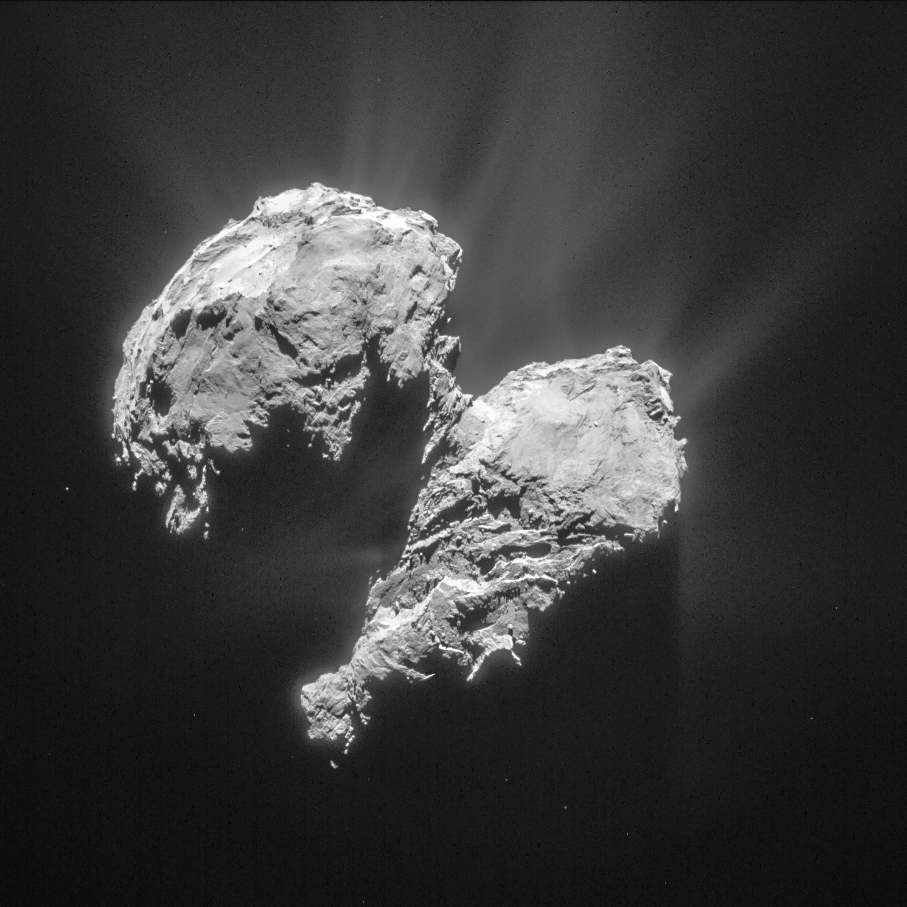
The operations team leading Europe’s fabulously successful Rosetta mission to comet 67P/Churyumov-Gerasimenko is now “rethinking” the strategy on how they will approach the spewing ice ball during future flybys, after impacts from a hail of debris strikes caused the probe to be “confused” and then enter “safe mode” and shut down the science instruments during the probe’s harrowing close encounter with the alien wanderer in late-March.
“We are rethinking how we go about ‘orbiting’ the comet,” Matt Taylor, Rosetta project scientist, told AmericaSpace in the wake of the significant navigation issues experienced by the spacecraft after it flew within 14 kilometers (8.7 miles) of the surface of comet 67P on March 30.
The European Space Agency’s (ESA) Rosetta spacecraft is humanity’s first spacecraft in the history of space exploration to orbit a comet.
The comet explorer’s star trackers—essential for navigation—were not able to lock onto stars and determine the probe’s orientation during the approach phase of the March 30 flyby. This caused the high gain antenna to drift away from pointing to Earth.
What was the impact? How long was there concern for Rosetta?
“The more concerning aspect was the fact that we were not able to navigate with the star-trackers for about a day,” Taylor replied to AmericaSpace.
How will the orbit and approach change?
“We will look to approach the comet in a set of pyramid orbits, similar to those we did last year.”
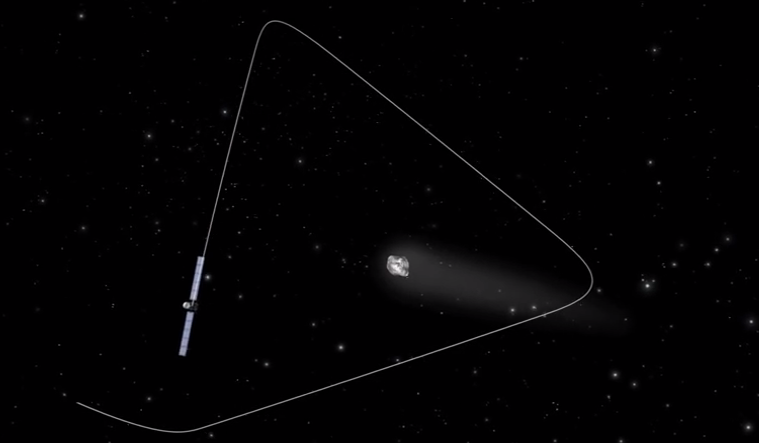
Are the spacecraft and science instruments healthy after the encounter and going into safe mode?
“The spacecraft and instruments are all fine,” Taylor confirmed.
“By definition, that’s what a safe mode is: safe.”
The star trackers could not differentiate between the stars and cometary particles blasting away from the nucleus.
After the March 30 flyby, engineers did eventually regain attitude and spacecraft control, and managed to successfully fire the thrusters on April 1 and maneuver Rosetta back in from a distance of 400 km to a science survey orbiting distance of about 140 km from the comet.
“By Wednesday this week [April 8] we’re back to around 140 km from the comet and will start science operations again,” Taylor informed.
“As a result of not being able to navigate with the star-trackers for about a day, we are re-thinking how we go about ‘orbiting’ the comet to avoid the situation experienced around the [March 30] flyby.”
Rosetta has enjoyed a nearly flawless dance of unprecedented up-close science exploration with the bizarre comet, since arriving in orbit on Aug. 6, 2014, after a decade-long interplanetary journey of some 500 million kilometers (300 million miles) from Earth.
But the comet’s activity and outpouring of gas and dust has picked up dramatically as the pair veer in ever closer toward the Sun and feel the impact of its warming.
Comet 67P and Rosetta will reach perihelion on Aug. 13, 2015, at a distance of 186 million km from the Sun, between the orbits of Earth and Mars.
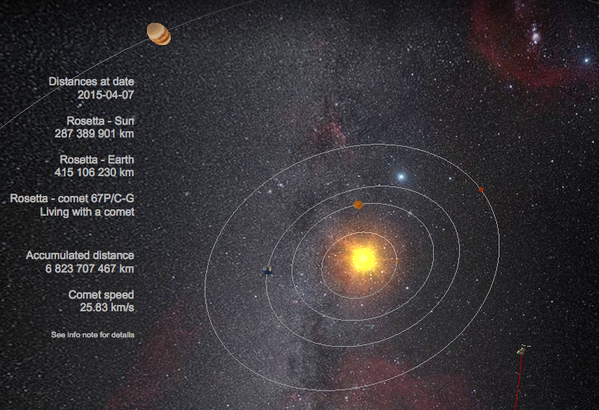
As of today, the pair are less than 422 million km from Earth and 291 million km from Sun. That’s more than 50 million km closer to the Sun since the Valentine’s Day 2015 flyby, which was the closest ever and also caused issues with the star tracker and navigation.
On Valentine’s Day, Rosetta enjoyed a daring plunge to within 6 kilometers (3.8 miles) over the comet’s Imhotep region, located on 67P’s larger lobe.
The March 30 flyby also took place over the large lobe of the binary object when it soared within 14 km (about 16 km (10 mi) from the center) of its crater-filled body strewn with boulders, some as large as a house.
The tiny dual-lobed body is shaped like a rubber ducky and measures only about 4 kilometers (2.5 mile) wide.
Rosetta is equipped with a suite of 11 state-of-the-art science instruments.
When will the science instruments be turned back on?
“We will start science operations again. Most instruments will be back on and operating this week.”
Which instruments are coming back first?
“Instruments are coming back online, many in situ are on.”
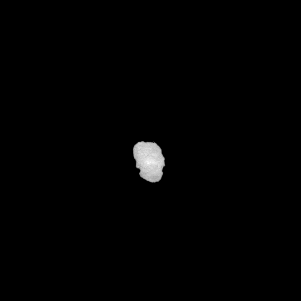
How about the Navcam and OSIRIS high resolution cameras?
“NAVCAM is on. OSIRIS not yet.”
Recovery efforts are in progress.
“More information will come in the next weeks, once we are back in the “zone” as it were,” Taylor told AmericaSpace.
The comet is comprised mostly of water ice and dust, is fluffy, and has a very high porosity of 70 to 80 percent—so it would float on water.
“The nucleus surface itself appears rich in organic materials, with little sign of water ice,” says Taylor.
And the team is still listening for signs of signals from the Philae lander which successfully touched down on Nov. 12, 2014, and transmitted data.
How is the Philae search going?
“We will listen for Philae. No signals yet.”
Stay tuned here for continuing developments.
Want to keep up-to-date with all things space? Be sure to “Like” AmericaSpace on Facebook and follow us on Twitter: @AmericaSpace
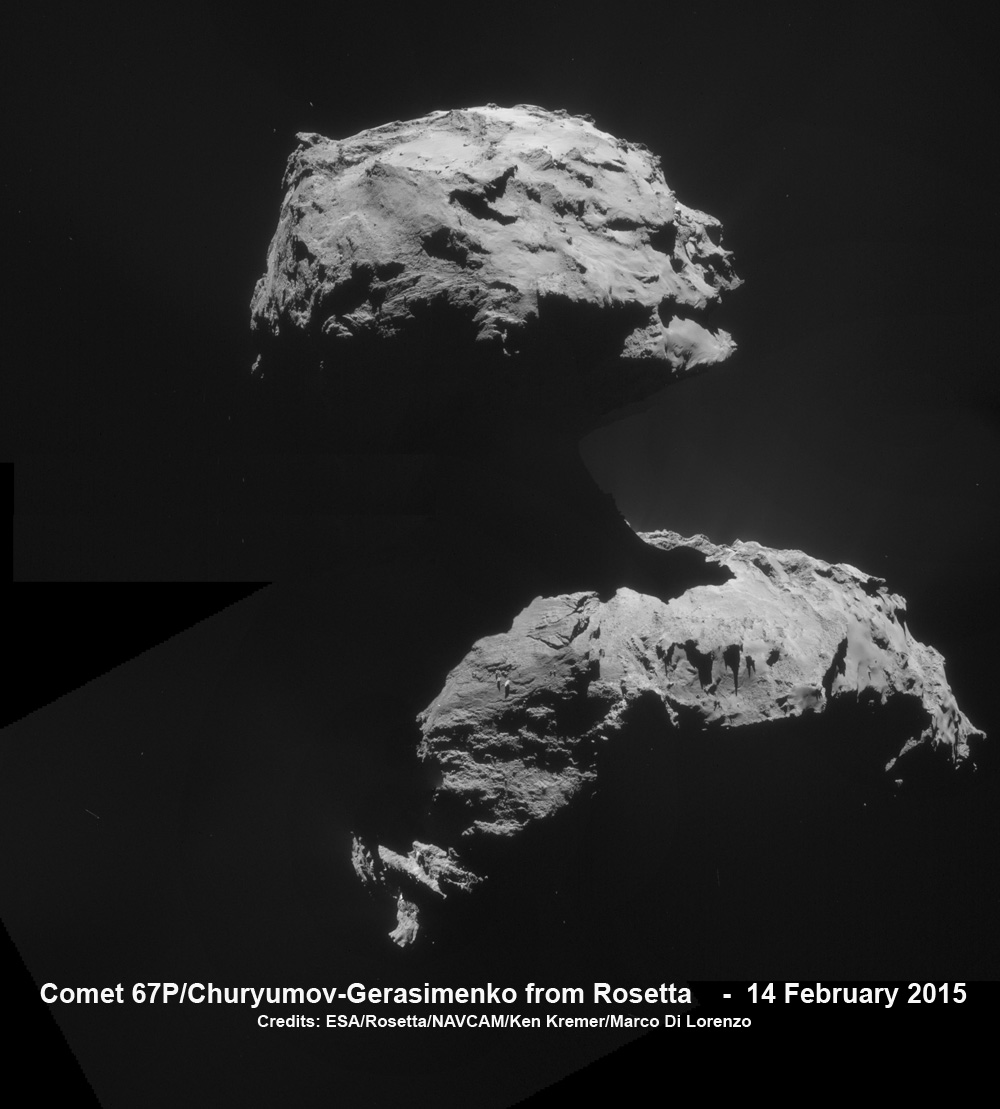




Just did not have enough money to make Philae a good bet. There is no cheap. Sad.
Sehr schöner Artikel! Ich leide selbst an Haarverlust.
Ich habe viele Haarwuchsmittel probiert und am besten fand ich Alpecin.